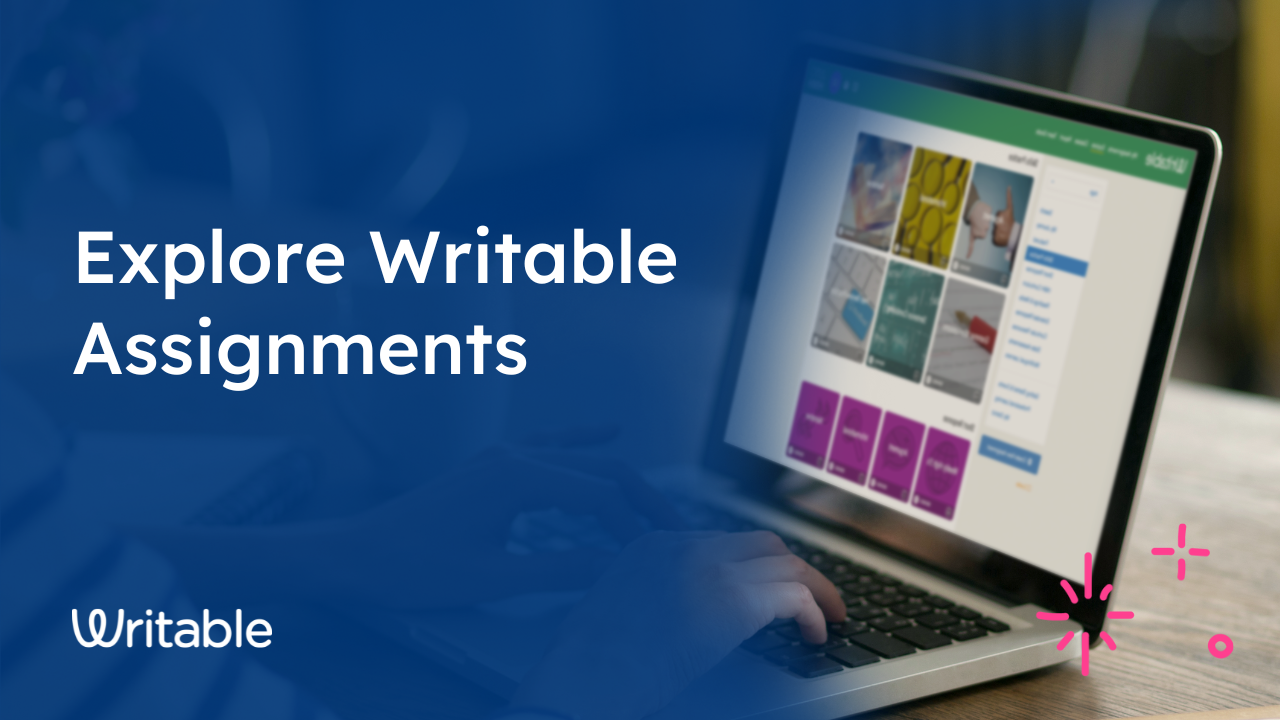Get your students thinking about and responding to what’s happening in your classroom right now with Writable’s new High 5 Assignments! This type of assignment, sometimes referred to as an Icebreaker, Do Now, Bell Ringer, Entrance or Exit Ticket, Warm Up, and more, is great for engaging students with writing for about five minutes on a daily basis.

Creating and assigning a High 5 Assignment in Writable takes seconds, and is as simple as writing a question to get your students thinking, writing, and discussing. Writable also makes it easy to incorporate peer feedback, gather GrammarAid insights, or to do a quick formative assessment in a skill area with the ‘Enable Skill Tracking’ option. Keep reading for 15 ways you can use High 5 assignments in your classroom everyday!

1. Brainstorm: Have students think about an upcoming topic or concept in class while getting an idea about what they might already know. By adding on the peer review feature to this type of assignment, students can get additional ideas and offer comments. All you have to do is pose a simple question, like “What do you already know about the Civil Rights Act?” in the High 5 Assignment Wizard to get students started.
2. Review: Have you just finished a lesson, a book, or a topic in class? You can ask students to share what they learned or summarize what they read, which will help them review learning while giving you insight into what they might need additional support with.
3. Respond: This is a great way to use a reading, text, video, piece of music, or even something outside the window that you’d like students to respond to. This type of High 5 assignment can get students thinking creatively!
4. Current Events: Easily bring relevant news topics and current events into your classroom by asking students their opinion, or to respond to a current event. By optionally turning on peer review, students can anonymously learn insights from others or start a dialogue.
5. The Writing Process: Help students practice writing strategies or skills, or focus on vocabulary or grammar exercises to start out a lesson. Questions like “How is a thesis statement different from a topic sentence?” are fantastic ways to begin your lesson on the thesis statement!
6. Predictions & Observations: “What do you think will happen next to the main character and why?” and “What are your observations about yesterday’s science experiment?” are examples of questions to get students analyzing and critically observing a lesson or text.
7. Introductions: High 5’s are a helpful way to get to know your students throughout the school year. Prompts like “What does your name mean?”, “How do you celebrate holidays?”, and “What hobbies or activities do you participate in outside of school?” can help students engage in writing about what they know best (themselves)!
8. Daily Journal: Whether you’d like your students to complete daily free writes, or write a blog style entry, High 5’s are the perfect medium.
9. Problems: Curious to know what a student might be stuck on, if they need help, or are confused? Ask them! Letting them write out the issues they might be having can provide you insight into who needs support, spot class trends, and more.
10. Quizzes, Polls, or Games: High 5’s can be fun! Let students take a quiz, poll, or play a game, then write about their results or experience for a few minutes.
11. Opinion: Do students agree or disagree about a topic? Why are they taking that stance? Sharing their opinions before or after a topical lesson can help students to process what they learned while supporting their argument writing. This type of High 5 is great for adding Skill Tracking. Simply add an argument writing skill, and get automatic insights about their writing.
12. SEL: Help students to feel seen and heard by asking them “How are you doing today?” A simple check in on their emotional well being can go a long way. Students can respond in writing, or use Writable’s audio or video response options, and you can respond to their High 5with audio or video too!
13. Description: Help students explore descriptive language and improve vocabulary by describing an event, object, person, or whatever comes to mind.
14. Goals: Whether they are short term goals about an assignment, or long term goals relevant to a student’s life, writing about what you want to achieve in the future can help a student reach their goal. All assignments in Writable can be looked back on by the student, and this type of writing can be a great reminder in the future of a student’s achievements.
15. Assessment: With Skill Tracking enabled on a High 5 assignment, you can easily measure student writing progress on a single writing skill, like comprehension or developing a narrative, without having students take an actual writing assessment. Gauge progress and spot learning gaps while students complete their daily class writing assignment!
After completing one of these quick assignments, don’t forget to give your students (and yourself) a high five! Regularly writing is the fastest way to grow as a writer, and is something to be celebrated. Once students begin writing, you can check in on the assignment dashboard to get insights and assignment recommendations which can help you know ‘What’s next?’ for your students.

Have you tried a High 5 assignment or have a great idea on how to use them? Let us know on Twitter or share it with fellow educators in Writable’s Facebook Group!

Are you new to Writable or curious to learn more? Create a free teacher account, check out our pricing, or schedule a personalized demo!



